#peter brötzmann quartet
Explore tagged Tumblr posts
Text
Music is an Essential Verb: Derek Taylor 2023
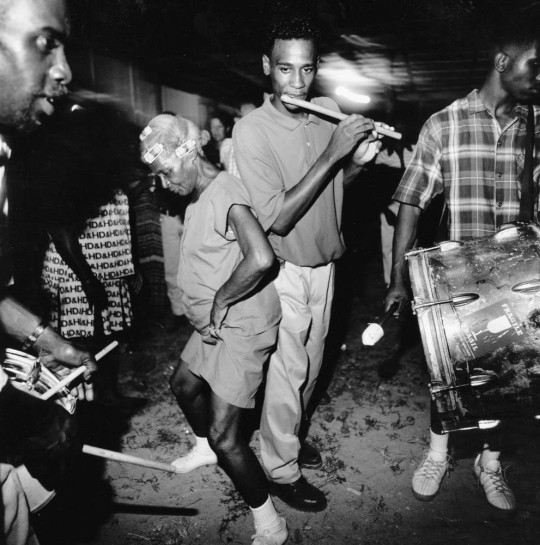
Music remains, along with family, friends, and a select few venial vices, my primary daily defense against the mental erosions of spiritual malaise and existential dread. Being a humanist also means being a realist, and little looks to be different on that score in the year ahead as we continue to careen toward a bleak and self-defeating dénouement. The veil of uncertainty around what ultimately feels like inevitability redoubles the need to remain thankful for and supportive of those who devote themselves to art. Summary capsules below describe some of the sounds that kept me going in 2023.
Peter Brötzmann, Wayne Shorter, Kidd Jordan, & Charles Gayle
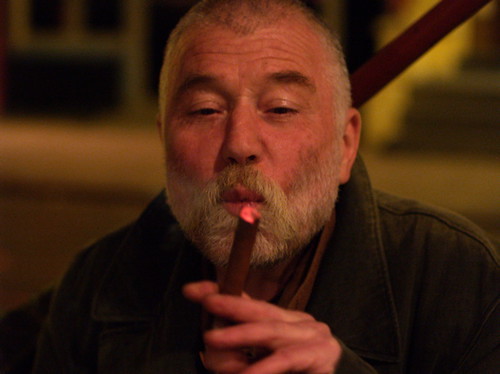
“The trauma of my generation was what our fathers had done to the rest of the world, and so we said, ‘never again,’ and that was the whole impetus through all my life, and it still is.” ~ Brötzmann (2018)
Musician attrition and demise are dispiriting aspects of every annum, but the departure of four disparate octogenarian reedists exacted an especially steep emotional and cultural toll this year. Shorter and Jordan passed away in March, each of them leaving a rich legacy as indefatigable improviser and altruistic educator that continue influence and inspire. Brötzmann exited in June after the return of a protracted respiratory illness. Few if any can match the magnitude of his mileage and six-decade itinerary as an irrepressible, obstinately adventurous world traveler. Gayle ascended in September, an ardent, uncompromising eremite to the end. All four men left behind discographies and concert/interview footage that will leave the faithful and curious listening and marveling in perpetuity, but their collective absence still aches.
Kirk Knuffke & Joe McPhee Quartet + 1 – Keep the Dream Up (Fundacja Sluchaj)
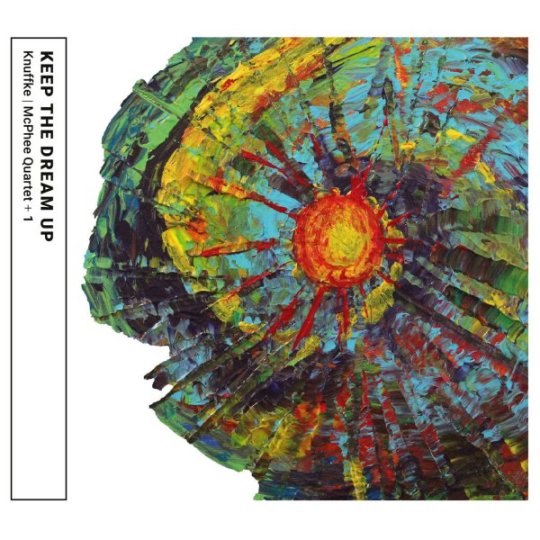
One of the manifold joys of following the output of Kirk Knuffke is anticipating who he’ll collaborate with next. The cornetist’s ears and imagination are as huge as his heart, a trait he has in common with the equally equanimous Joe McPhee. They’ve known each other for years but Keep the Dream Up is their first released collaboration and it’s an affirming alloy of their complementary creative temperaments. Longtime McPhee comrades Michael Bisio and Jay Rosen complete the quartet with bass clarinetist Christof Knoche comprising the additive on a Brooklyn studio session that captures collective creative lightning in a digital bottle. My album of the year for these reasons and more, although hopefully Joe will bring his brass to a follow-up conclave soon.
Don Byas – Classic Sessions 1944-1946 (Mosaic)
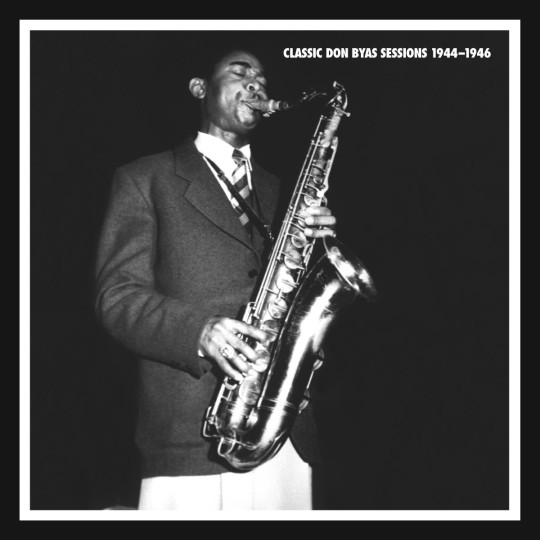
Saxophonist Don Byas recorded prolifically during the 1940s. His porous sound and popular style bridged the schools of swing and bop through prowess and panache aligned with the most esteemed of post-WII tone scientists. That sustained industriousness hasn’t reflected in reliable access to his works, primarily because they’re spread across a plethora of independent labels and competing copyrights. Leave it to Mosaic Records to rectify the longstanding reissue lacuna. This long gestating collection corrals and sequences the bulk of them across ten discs, scrubbing their sound, and adding an expansive cache of rarified verité concert recordings made in a Swedish jazz fan’s residence. Indulging in one’s Byas bias has never been easier or as edifying.
Fred Anderson – The Milwaukee Tapes Vol. 2 (Corbett vs Dempsey)
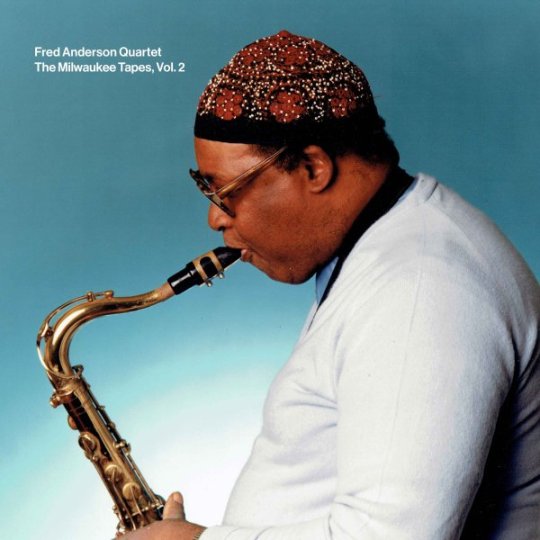
Patience and long-game aptitude are among music producer/archivist/advocate John Corbett’s virtues. This unexpected, but abundantly welcome sequel to an archival Anderson collection on Corbett’s long defunct Unheard Music Series took 23 years to secure commercial circulation and offers an additional hour-plus from the same gig in improved sound. Fellow AACMers Billy Brimfield and Hamid (nee Hank) Drake join bassist Larry Hayrod in bringing vibrant, detailed life to the Lone Prophet of the Prairie’s (as Anderson was affectionately known) serpentine, cerulean melodies. Corbett’s current label released a plenitude of music in 2023 (see also below) but the uncommon opportunity to hear more Anderson of any vintage makes this release worthy of independent mention.
Jason Adasiewicz

Corbett vs. Dempsey also had a welcome role in Jason Adasiewicz’s return to record with two different projects. On vinyl, Roy’s World documents a 2017 Chicago studio session by the vibraphonist’s quintet originally intended as the soundtrack to a film based on neo-noir novelist Barry Gifford’s short stories. Chicago stalwarts Josh Berman, Joshua Abrams, Hamid Drake, join saxophonist Jonathan Doyle in the ensemble for a program that sounds at once fresh and nostalgic while always vital. On CD, Roscoe’s Village dispenses with band for a solo selective foray through the songbook of Roscoe Mitchell including evocative renderings of “Congliptious” and “A Jackson in Your House” that retain the composer’s essence while striking out in bold new directions.
Natural Information Society
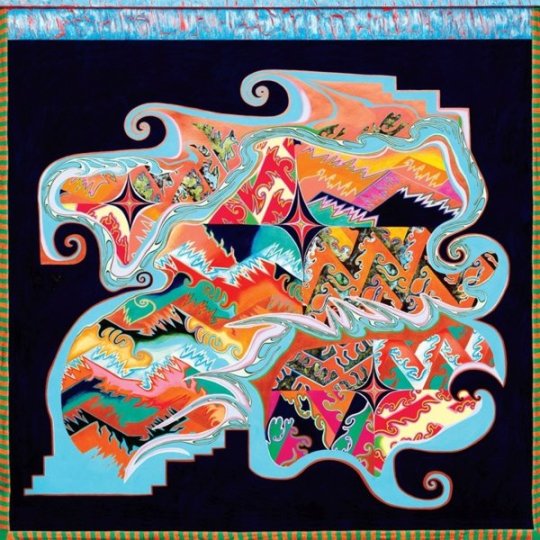
Grounded as it is in core voices of guembri, frame drum and harmonium, codification of Josh Abrams’ NIS as a jazz ensemble immediately feels reductively incomplete. All participating instruments can be active architects in the undulating, melody-laced drones that frequently form the basis of the band’s gradual, granulated improvisations. Performances are more akin to collective expeditions where a galvanizing gestalt effect is afoot; one where earned communal peaks preserve the individual power and agency of the interlocking parts. Since Time is Gravity augments this already catalytic template by incorporating a larger contingent of Chicago colleagues including tenorist Ari Brown to the equation.
Abdul Wadud
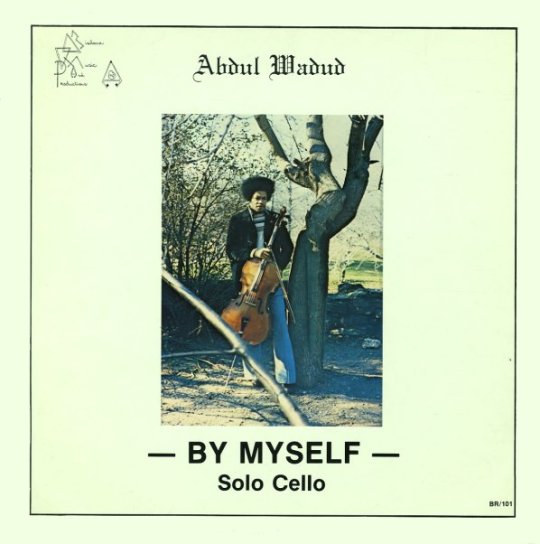
A jazz-based improviser on the cello who didn’t double on other stringed instruments, Wadud was also a consummate collaborator and sideman. Magnanimity in lending his substantial talents to the projects of others resulted in a paucity of albums under his own name. By Myself from 1977 on the Bisharra label is a revelatory anomaly on that self-effacing resume. Wadud approaches the instrument as a multifaceted sound factory, plucking, strumming, and bowing, often simultaneously, to create solo tone poems steeped in personal poignancy. Gotta Groove’s vinyl reissue is a beautiful facsimile of the original album object in faithfully reconstructed fidelity.
Marion Brown
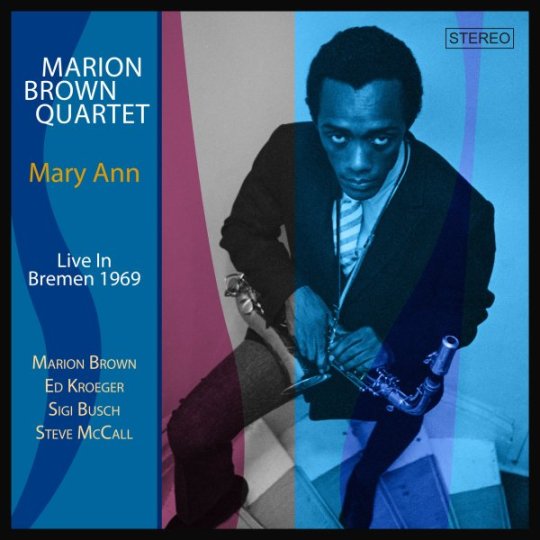
Georgia-born altoist Marion Brown had a lengthy, storied career but the body of recorded work that he left behind can present difficulties in terms of ingress to its totality. Scattered across labels, years, and circumstances, much of it is either out of print or commercially unreleased. That collective relative obscurity makes a trio of releases, two on the German Moosicus label, and a third Record Store Day viny reissue of Brown’s 1970 studio duets with Wadada Leo Smith under the shared sobriquet Creative Improvisation Ensemble even more valuable. Of the former two, Mary Ann presents concert material by Brown’s quartet from a 1969 Bremen club gig in soundboard fidelity. Gesprächsfetzen & In Sommerhausen combines two more German concert snapshots, quintet, and sextet, from 1968 & 1969 with Gunter Hampel originally released on the Calig imprint. Steve McCall is a boon on drums in all three contexts.
Art Pepper – Complete Maiden Voyage Recordings (Omnivore)
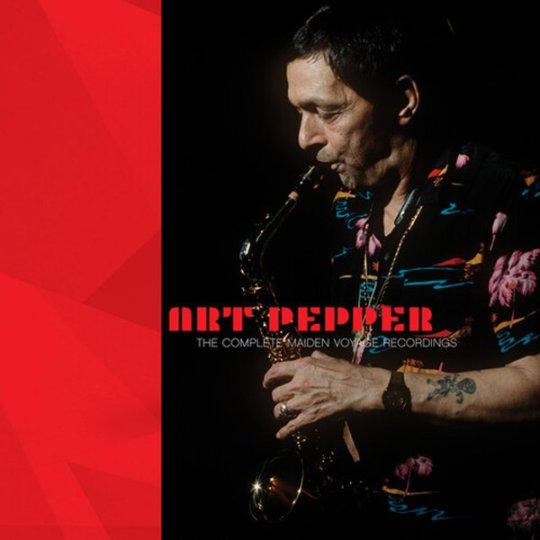
Art Pepper was an inveterate rake for most of his life, magnifying destructive interpersonal tendencies with drugs and frustratingly frequent acts of self-sabotage. That star-crossed propensity makes the fact that he left so much magnificent music even more miraculous. This lavish box is a fascinating compendium of the constantly competing artistic contradictions at his center, collecting a quartet gig across three nights and seven club sets in Pepper’s native Los Angeles, ten months prior to his premature passing at 56. Over half of the music is previously unreleased and the rhythm section, led by the impeccable and implacable pianistics of George Cables, gives Pepper a cumulative confidence boost that keeps him on the rails. None of it has ever sounded better.
Pan Afrikan People’s Arkestra
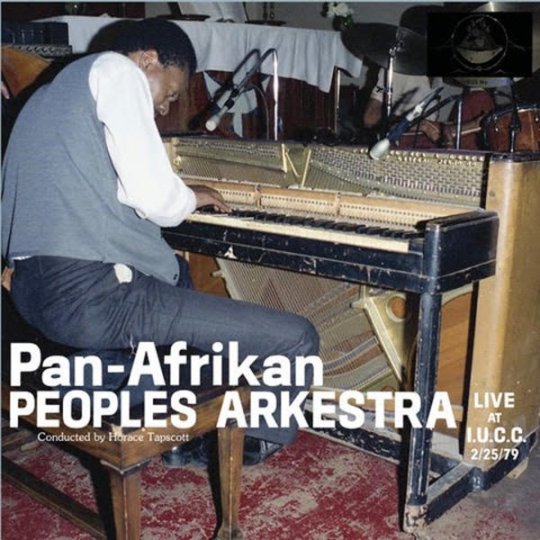
Los Angeles of the late-1970s was an unforgiving environment for the economic necessities of orchestral jazz. The Pan Afrikan People’s Arkestra, under the nominal leadership of pianist/composer/community organizer Horace Tapscott, was a tenaciously subversive force in the face of that ruinous rule. Adopting the Immanuel United Church of Christ as an informal base of operations, the large ensemble resourcefully engaged in an ambitious series of concerts in 1979. The Nimbus label, long a Tapscott exponent and repository, released the first three entries this year in an archival subscription series collecting the voluminous results. Titles are also available individually and present the pivotal band at a performative peak with star soloists Sabir Mateen, Billy Harris, Jesse Sharps, and Robert Miranda shining just as bright as their fearless foreman.
Alan Skidmore – A Supreme Love

Unexpectedly issued on Mark Wastell’s Confront label, an imprint better known for its fealty to free improvisation, this six-disc archival tribute to Alan Skidmore’s 70+ year career in music launches with the saxophonist’s 1961 radio debut and lands some seven-hours later with his intimate 2019 rendering of John Coltrane’s “Psalm.” The aural expanse between is brimming with bright moments and luminary collaborators the likes of which include Tony Oxley, Kenny Wheeler, Wayne Shorter, Dave Holland, Mike Osborne, Elvin Jones, and another dozen name drops from the top tier of improvised music. It’s a wild, illuminating ride and a sterling example of a musical memorial done right.
The Jazz Doctors – Intensive Care/Prescriptions Filled: The Billy Bang Quartet Sessions 1983/1984 (Cadillac)
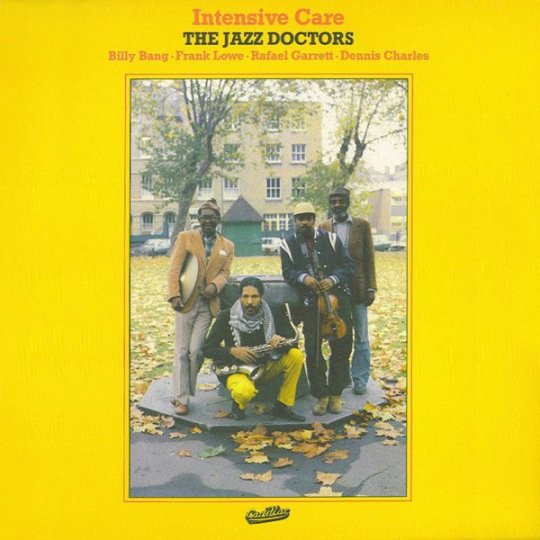
Billy Bang and Frank Lowe shared a bottomless fraternal bond forged through parallel traumas internalized in Vietnam and expressed by the subsequent embrace of the restorative power of improvised music. The pair of sessions (one reissued, one archival) collected on this disc epitomize their deep attachment arguably as well as any of their other numerous collaborations. Outside the cardinal duo, the Jazz Doctors never really had a stable lineup, but the quartets here embody two of their best. Both programs are loosely adherent to freebop conventions with violin and tenor saxophone combining over contrabass and drums for a potent front line. Bang and Lowe are long gone now, their shared absence making the availability of this music even more precious.
Attila Zoller & Jimmy Raney

Hungarian guitarist Attila Zoller had selective affinity for other artists on the instrument, so much so that his mid-career period is seeded by fateful encounters with plectrist peers. Most prolific among these partnerships was his prudent pairing with Jimmy Raney. A popular proponent of bop-based jazz, Raney was in a similar exploratory headspace when the two joined forces on a trio of recordings for the German L + R label over a seven-year span. Concert dates from Frankfurt (’80) and Berlin (’86) find the duo spooling out lengthy dialogues that dabble in free improvisation while keeping codified melodies within reach. An earlier New York encounter (’79) explores their rapport in a studio. All three reissues on the Japanese Ultra-Vybe imprint are aces.
Steve Swell’s Fire Into Music
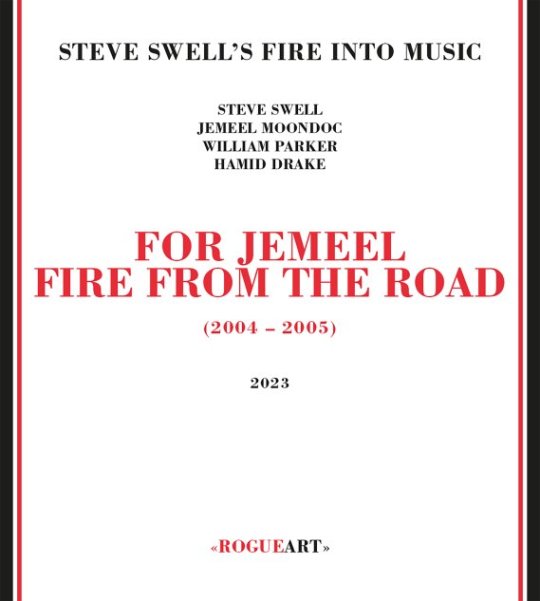
Simultaneously emblematic of NYC free jazz in the early aughts and fiercely dedicated to resisting pitfalls of provincialism by touring generously and rigorously, trombonist Steve Swell’s Fire into Music was one of the finest quartets of its kind. Posthumously dedicated to the late altoist Moondoc, this three CD set collects a trio of small venue concerts by the band from gigs in Texas and Ontario. As with the horns, William Parker and Hamid Drake are ideally suited to the extended, expository freebop safaris that formed the ensemble’s flexible repertoire. Swell’s the leader on paper but sagely embraces musical communalism without fail.
Intakt

Running a physical media imprint in the 21st century is an inherently parlous enterprise, but this steadfast Swiss label continues to evidence how it’s done. This year’s standout catalog entries include Andrew Cyrille’s Music Delivery/Percussion, the octogenarian drummer’s third solo album and first in 45-years; bassist Jöelle Leandré’s solo Zurich Concert; pianist Aruán Ortiz’s Serranías Sketchbook for Piano Trio; Beyond Dragons by the trio of saxophonist Angelika Niescier, cellist Tomeka Reid, and drummer Savannah Harris, and Ohad Talmor’s Back to the Land, a quartet-plus-guests survey that takes its compositional focus an archival workshop date by Ornette Coleman and Lee Konitz.
Ezz-thetics
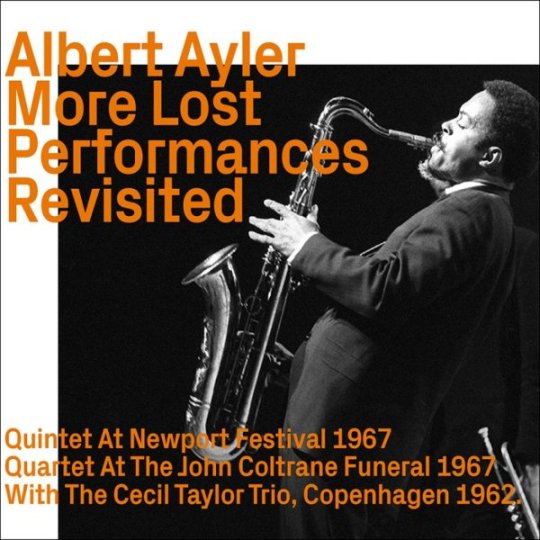
The appearance of the Swiss Ezz-thetics imprint four years ago raised both eyebrows and ire. Lacking access to master tapes, veteran free jazz and new music producer Werner Uehlinger sourced commercially released editions instead, employing ace audio engineer Peter Pfister succeeded by Michael Brandli to rejuvenate and refurbish the recordings, stateside copyright considerations be damned. Reaction was expeditious and polemical, but proof is in the hearing as most of the label’s dozens of releases sound better than their original incarnations. Catalog highlights this year include another round of Albert Ayler airshots including his pivotal meeting with the Cecil Tayor Trio in 1962 on More Lost Performances, Charles Mingus’ At Antibes 1960, and Ornette Coleman’s At the Golden Circle.
Fresh Sound
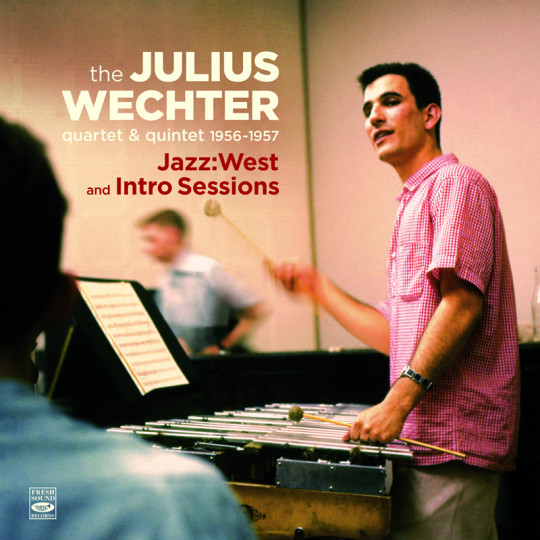
Jordi Pujol is akin to Uehlinger in that he refuses to let his vision and ambitions as a producer be abbreviated by external opinion. In Pujol’s case it’s yielded a bountiful inventory of antiquarian titles that rights holders have shown little to zero interest in restoring to begin with. Cases in point for this year include a definitive collection of obscurando saxophonist Boots Mussulli’s works; concert and studio collections by the Count Basie alumni tandem of Al Grey and Billy Mitchell; hens’ teeth rare leader sessions by Arthur Lyman vibraphonist Julius Wechter; and a two-fer of Julliard-trained Ellingtonian Cass Harrison piano trio albums. Exciting guilty pleasures all around.
Playing for the Man at the Door

As complex as he was controversial, Robert “Mack” McCormick deserves consideration in the esteemed company of other maverick cultural archivists like Alan Lomax, George Mitchell, and Harry Smith. With a preservationist purview mostly comprising Texas and bordering states, McCormick spent much of his adult life obsessively documenting and disentangling the cultural capital of the region through recordings, photography, interviews, essays, and research. Smithsonian Folkways became repository for the massive reservoir after his passing and this box is the first in what will hopefully be multiple dispatches from the same. Unreleased field recordings of Mance Lipscomb and Lightnin’ Hopkins represent the big names, but works by the likes of Hop Wilson, Cedell Davis, Robert Shaw, and a handful of others are just as persuasive. Bongo Joe Coleman’s impassioned presidential pitch closing the set will have listeners pining for a time when third party Executive Branch candidacy didn’t seem so fraught.
Joni Mitchell Archives - Vol. 3, The Asylum Years 1972 to 1975

Mitchell’s continuing project corollary to her old friend Neil Young’s analogously exhaustive retrospective enterprise, this third entry in the series finds her 30-something-self further broadening the lens of her art beyond the solo concert music that dominated the first two boxes. There are stirring solitary shows here, too, but it’s the band offerings that prove most revealing, particularly in the company of reedist Tom Scott’s fusion group L.A. Express. James Taylor, Graham Nash, and David Crosby lend contributory hands, and there’s a brief but intriguing collaboration with Young alongside a trove of demos and workshop versions of songs from her first three albums for Asylum.
Martin Davidson
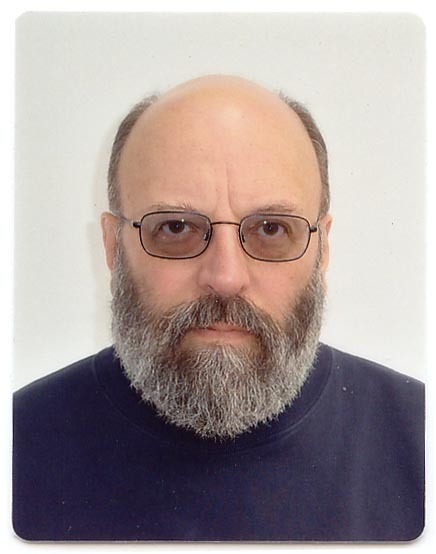
In closing, another memorial. Martin Davidson wasn’t a musician, but European free improvisation as an art and archive would be a fraction of what it is without his copious and enduring work. As steadfast proprietor of the Emanem label he put his resources into musicians whose efforts frequently fell outside the probability of consistent commercial remuneration. Under his aegis, influential improvisers like Steve Lacy, Derek Bailey, Evan Parker, and Paul Rutherford gained robust catalogs alongside other aspiring artists who never garnered even niche cachet. Davidson was a curmudgeon and an anachronism, trusting his ears implicitly, suffering the indignities of inquiries from strangers seeking audience with the hip hop icon who shared the phonetics of his imprint’s name, and advancing the pleasures of physical media well past their purported expiration date. He was also a talented writer, adding invaluable context to his releases through first-person testimony and critique. Martin will be missed.
And as is tradition in this 20th iteration of this year-end exercise, 25 more titles in stochastic order. Thanks to all for reading, and gratitude to Jennifer Kelly for providing the forum and formatting.
Rodrigo Amado’s The Bridge – Beyond the Margins (Trost)
James Brandon Lewis – For Mahalia with Love (Tao Forms)
Henry Threadgill – The Other One (Pi)
Guillermo Gregorio – Two Trios (ESP)
Rob Brown – Oceanic (RogueArt)
Rich Halley Quintet – Fire Within (Pine Eagle)
Milford Graves w/ Arthur Doyle & Hugh Glover – Children of the Forest (Black Editions)
Mike Osborne – Starting Fires: Live at the 100 Club 1970 (British Progressive Jazz)
Jim Hall – Uniquities Vol 1 + 2 (ArtistShare)
Madhuvanti Pal – The Holy Mother (Sublime Frequencies)
V/A – On the Honky Tonk Highway with Augie Meyers & the Texas Re-Cord Company (Bear Family)
Mal Waldron & Terumasa Hino – Reminiscent Suite (Victor/BBE)
Oum Kalsoum – L’Astre D’Orient 1926-1937 (Fremeaux & Associates)
Sonny Rollins w/ the Heikki Sarmanto Trio – Live at Finlandia Hall Helsinki 1972 (Svart)
V/A – Equatoriana: El Universo Paralelo de Polibio Mayorga (Analog Africa)
Evan Parker – NYC 1978 (Relative Pitch)
V/A – If There’s a Hell Below (Numero Group)
John Coltrane – Evenings at the Village Gate (Impulse)
Derek Bailey & Paul Motian – Duo in Concert (Frozen Reeds)
Peter Brötzmann/Fred Van Hove/Han Bennink/Albert Mangelsdorff – Outspan 1 & 2 (FMP/Cien Fuegos)
Hasaan Ibn Ali – Reaching for the Stars: Trios/Duos/Solos (Omnivore)
Mark Dresser – Tines of Change (Pyroclastic)
Steve Millhouse – The Unwinding (Steeplechase)
Myra Melford’s Fire and Water Quintet – Hear the Light Singing (RogueArt)
V/A – Destination Desert: 33 Oriental Rock & Roll Treasures (Bear Family)
#dusted magazine#derek taylor#yearend 2023#Peter Brötzmann#Wayne Shorter#jazz#kidd jordan#charles gayle#kirk knuffle#joe mcphee#don byas#fred anderson#Jason Adasiewicz#natural information society#Abdul Wadud#marion brown#art pepper#Pan Afrikan People’s Arkestra#Alan Skidmore#The jazz doctors#Attila Zoller & Jimmy Raney
16 notes
·
View notes
Text
LÉGENDES DU JAZZ
FRED HOPKINS, PARCOURS D’UN INNOVATEUR
“He was very aggressive, he attacked the bass. He sounded like someone who wanted to play and knew how to do it. And I sure never heard a bow style like that.”
- Fred Anderson
Né le 11 octobre 1947 à Chicago, dans les Illinois, Fred Hopkins a grandi dans une famille musicale et avait écouté différents styles de musique dès son plus jeune âge. Hopkins a fréquenté le DuSable High School où il avait étudié sous la direction du légendaire "Captain" Walter H. Dyett, qui avait formé de nombreux musiciens de jazz, dont Eddie Harris, Gene Ammons, Von Freeman et Dorothy Donegan.
Hopkins avait d’abord voulu apprendre le violoncelle après avoir regardé une performance de Pablo Casals à la télévision, mais il avait opté pour la contrebasse après que Dyett l’ait informé que l’école n’avait pas de violoncelle en sa possession.
Après avoir décroché son diplôme du high school, Hopkins avait brièvement travaillé dans une épicerie. Après avoir été encouragé par Dyett et certains de ses amis à pratiquer la musique plus sérieusement, Hopkins avait commencé à jouer avec le Civic Orchestra of Chicago (l’orchestre de pratique du Chicago Symphony Orchestra), ce qui lui avait permis de devenir le premier récipiendaire de la Charles Clark Memorial Scholarship, d’étudier avec Joseph Gustafeste, le principal contrebassiste du Chicago Symphony Orchestra, et d’obtenir des contrats pour jouer dans des duos piano-contrebasse.
DÉBUTS DE CARRIERE
Au milieu des années 1960, Hopkins avait assisté à un concert de l’Association for the Advacement of Creative Musicians (AACM) à Hyde Park. Impressionné même s’il ne s’était officiellement joint à l’AACM qu’à son arrivée à New York en 1975, Hopkins avait commenccé à jouer avec le saxophoniste Kalaparusha Maurice McIntyre, avec qui il avait fait ses débuts sur disque en 1970 sur l’album Forces and Feelings. Durant la même période, Hopkins avait commencé à se concentrer plus sérieusement sur l’improvisation, se produisant notamment avec l’Experimental Band de Muhal Richard Abrams et d’autres groupes qui lui étaient apparentés. Reconnaissant John Coltrane comme une de ses sources d’inspiration majeures, Hopkins avait précisé: "It really changed my whole outlook on music. I knew then that I could do anything I wanted to do... And from that point on, I just got more involved, and started meeting more people over the years."
En 1971, Hopkins avait formé le trio Reflection avec le saxophoniste Henry Threadgill et le batteur Steve McCall. Formation plutôt inorthodoxe pour l’époque, le groupe Air Reflection avait été formé à l’origine pour produire de la musique pour une pièce de théâtre portant sur le pionnier du ragtime Scott Joplin. Doté d’une section rythmique plutôt impressionnante, le trio accordait une place importante à l’humour et à la composition.
En 1975, comme plusieurs autres musiciens de free jazz de Chicago, Hopkins s’était installé à New York où il avait retrouvé ses vieux compères Threadgill et McCall qui s’étaient également établis dans le Big Apple à la même époque. Rebaptisé Air, le trio de Hopkins, Threadgill et McCall avait commencé à jouer en tournée et à enregistrer régulièrement.
En plus de s’être officiellement joint à l’AACM, Hopkins s’était impliqué activement dans la scène du loft à New York. Au cours des décennies suivantes, Hopkins avait été de plus en plus reconnu, en jouant et en enregistrant avec de grands noms du jazz comme Roy Haynes, Muhal Richard Abrams, Hamiet Bluiett, Anthony Braxton, Peter Brötzmann, Marion Brown, Arthur Blythe, Oliver Lake, David Murray (avec qui il avait enregistré plusieurs albums), Diedre Murray (un violoncelliste avec qui il avait longtemps joué en duo et en quartet), Don Pullen, le groupe World Bass Violin, ainsi qu’avec le sextet de Threadgill. Dans les années 1980, Hopkins avait enregistré une douzaine d’albums avec des sommités du jazz d’avant-garde comme Henry Threadgill (Just the Facts and Pass the Bucket, 1983), Craig Harris (Black Bone, 1983) Ballads (1988) de David Murray et Muhal Richard Abrams (Hearinga Suite, 1989).
DERNIÈRES ANNÉES
En 1997, Hopkins était retourné à Chicago car il en avait assez du stress de la vie new-yorkaise. Le fait de retourner à Chicago avait également permis à Hopkins de renouer les liens avec sa famille, qui comprenait dix frères et soeurs ainsi que trente-cinq nièces et neveux. Hopkins avait continué de jouer, de voyager et d’enregistrer avec une grande variété de musiciens jusqu’à la fin de sa vie.
Fred Hopkins est décédé le 7 janvier 1999 d’une maladie de coeur à l’hôpital de l’Université de Chicago. Il était âgé de cinquante et un ans. Ont survécu à Hopkins sa mère Lula D. Hopkins, ses frères Allan, Joel, Dennis et Brian, ainsi que ses soeurs Jacqueline Graham et Cynthia Hopkins.
Plusieurs musiciens et amis d’Hopkins lui avaient rendu hommage en février 1999 dans le cadre d’un concert de trois heures présenté au Aaron Davis Hall. Doté d’un programme pour le moins ambitieux, le concert incluait des prestations de l’ARC Gospel Choir dirigé par Curtis Lundy, du quartet de trombones Slide Ride (composé de Craig Harris, Ray Anderson, Frank Lacy et Gary Valente), du Brass Fantasy de Lester Bowie, du World Saxophone Quartet et du groupe du pianiste Muhal Richard Abrams. Parmi les autres formations qui avaient participé au concert, certaines avaient été créées spécialement pour l’occasion. Accompagné par le saxophoniste Frank Lowe et le batteur Pheeroan akLaff, le poète Amiri Baraka avait lu une série de textes qui avaient permis de situer Hopkins dans la lignée des contrebassistes les plus innovateurs de l’histoire du jazz tels Reggie Workman et Jimmy Garrison. Le batteur Andrew Cyrille, le saxophoniste John Stubblefield, le pianiste D.D. Jackson et le guitariste Kelvin Bell avaient pour leur part présenté une série de compositions originales. Faisait également partie du programme l’ensemble Bass Guard, un groupe exclusivement composé de contrebassistes. La formation était composée de William Parker, Wilber Morris, Mark Helias, Michael Logan, Andy McKee et F. Vattel Cherry.
Le fait qu’Hopkins avait toujours préféré se produire comme accompagnateur plutôt que leader l’avait souvent empêché d’obtenir la reconnaissance qu’il méritait. En plus de faire de fréquents aller-retours entre Chicago et New York, Hopkins s’était souvent produit en Europe, où il avait été reconnu pour sa technique particulièrement fluide, sa tonalité originale, ses compositions audacieuses et ses talents d’improvisateur. Particulièrement réputé pour son jeu à l’archet, Hopkins avait surtout été influencé par Jimmy Garrison et Paul Chambers.
Saluant les capacités d’innovation d’Hopkins, le trompettiste de Chicago Malachi Thompson, qui avait travaillé avec Hopkins depuis la fin des années 1960, avait commenté: “In terms of his solo ability, he was one of the most creative players in jazz. The work he did with the bow was innovative, maybe even revolutionary. But whatever situation he was in, he could fit right in.” Un autre musicien de Chicago, le saxophoniste ténor Fred Anderson, avait ajouté: “He was very aggressive, he attacked the bass. He sounded like someone who wanted to play and knew how to do it. And I sure never heard a bow style like that.” Considérant Hopkins comme un des contrebassistes les plus accomplis de sa génération, le critique Howard Reich du Chicago Tribune avait salué sa ‘’technique extraordinairement fluide, sa somptueuse tonalité et les méthodes innovatrices qu’il avait appliquées à son instrument.’’
©-2025, tous droits réservés, Les Productions de l’Imaginaire historique
1 note
·
View note
Text
A Year Of Songs #46: “Enemy Within” by Last Exit

“The enemy within” is a phrase used by historical blemishes like Joseph McCarthy, Margaret Thatcher and Adolf Hitler. As the expression gains traction and frequency anew in the 21st Century, it’s worth remembering its history and what those who deployed this incitement to fear our neighbors, immigrants and dissenters did and wanted to do to democratic society.
But, the phrase is also a pointer inwards, a catalyst to examine and engage with the darker forces in our own souls, minds and hearts. One can’t be an enemy to anyone else without first kicking their better angels to the curb.
Which brings us to Last Exit, purveyors of Free Jazz for punks, a roar as consciously aggressive as Bad Brains and Fugazi capable of getting powerful emotional content across without a word.
“Enemy Within” appears on the short lived quartet’s self-titled 1986 debut carved from blistering live set at New Morning in Paris in February of that year. In less than four minutes, Sonny Sharrock(guitar), Peter Brötzmann (sax), Bill Laswell (6 string bass), and Ronald Shannon Jackson (drums, voice) present the angry maelstrom that occurs inside and out when enemies are identified and solutions proffered for “dealing with them properly.”
A less thoughtful early Metallica springs to mind during the opening drum/guitar stampede before Brötzmann’s uncivilized saxophone cuts and snares until derailed by Laswell’s foreboding bass in the concluding moments.
This is not a thought experiment despite the opening semiotic rumination. This is pure emotion, musicians surrendering fully and freely to the moment. Given the improvisational nature of Last Exit, song titles were likely decided after the fact. As smart guys, it’s unlikely they were unaware of the dark overtones “Enemy Within” carried, and in pointing us that direction perhaps drive a contemplation absent from their spectacular outburst, an amplified example of how art takes on a life of its own once released into the wild.
youtube
#a year of songs#song of the day#ayearofsongs#Last Exit#enemy within#sonny sharrock#bill laswell#ronald shannon jackson#peter brötzmann#1986#free jazz#punk#Youtube#Bandcamp
1 note
·
View note
Text
youtube
the layers of evan parkers playing on his solo sets like i dont rly kno if u can call it free improvisation cause it def feels like theres a concrete structure its so beautiful i was closing my eyes while listening and started to think i was hearing a string quartet while drifting n n out of sleep i have topography of the lungs and the peter brötzmann stuff hes on but in def gonna try to get hos solo sax stuff along with anthony braxtons solo sax stuff too like its so beautiful
0 notes
Text
"Bethlehem des Now Jazz"
w71: Trevor Watts / John Edwards / Tollef Østvang
von Rigobert Dittmann / bad alchemy
Der adventssonntägliche 3. Dez. beschert mir die Qual der Wahl zwischen der Freak-show mit Helene Richter & Hala und einer Legende. Denn in Weikersheim, dem Bethlehem des NowJazz, spielt mit Trevor Watts einer derjenigen, die in den 60ern für die Neugeburt des Jazz in britischen Farben gesorgt haben. Im letzten Februar vor dem "Blood, toil, tears and sweat"-Krieg geboren, gründete er 1965 mit dem Drummer John Stevens, den er im Wehrdienst bei der RAF in Köln kennengelernt hatte, das wegweisende Spontaneous Music Ensemble, 1967 die eigene Formation Amalgam, mit Stevens und Barry Guy, bei dessen London Jazz Composers Orchestra er natürlich ebenfalls zur Stelle war, während er seinen Weg fortsetzte bis zu seiner afrorhythmischen Moiré Music. And so on. Die seltene Mitfahrgelegenheit mit Martin, Hans und Peter gibt den Ausschlag. Drum steht nun diese Saxlegende aus Halifax vor mir, im schmalen Körper eines Teenagers, doch mit dem Knowhow von the Man on the Hill. Daneben der 25 Jahre jüngere John Edwards, der mich x Jahre und x-tausend Konzerte nach unserer letzten Begegnung anstrahlt wie das blühende Leben. Als Ace of the Bass, von seinen wilden Anfängen mit The Honkies, B Shops for the Poor und God bis hin zu The Remote Viewers, den New Old Luten und Big Bad Brötzmann Quintetten oder dem Trevor Watts Quartet mit Veryan Weston & Mark Sanders. Dritter Mann ist der Drummer Tollef Østvang, als mit Jg. 1985 weiterer Generationssprung und doch derjenige, der das Trio initiiert hat. Angereist aus Os in Østerdalen, mit besten Empfehlungen durch Universal Indians (mit John Dikeman & Joe Mc¬Phee), Mars Williams, All Included (mit Martin Küchen), steht er, hoch und schmal in Künstlerschwarz, da wie ein Page am Hof von König Olaf dem Strengen.
Teil 2 aus Platzgründen weiter unten

0 notes
Text
it's friday night and no love for ned is back to its usual peculiar self on wlur from 8pm until midnight.
last week's show (stream it on mixcloud) celebrated the music of peter brötzmann. if you've ever rolled your eyes because my show got "weird" in the second hour you can thank mr. brötzmann as he is probably the free jazz musician most responsible for sending me down that path twenty years ago. i witnessed two outstanding live performances from him in that time- once with his chicago tentet and once as a duo with joe mcphee. he'll be missed by myself and many others...
no love for ned on wlur – june 23rd, 2023 from 8pm-1am a tribute to peter brötzmann
artist // track // album // label brötzmann quartet // lila eula no. 2 // the inexplicable flyswatter // atavistic peter brötzmann trio with fred van hove // everything (excerpt) // for adolphe sax // brö peter brötzmann octet // machine gun (excerpt) // machine gun // brö manfred schoof // european echoes, part two (excerpt) // european echoes // free music production alexander von schlippenbach // into the staggerin // the living music // quasar peter brötzmann, fred van hove and han bennink // garten // balls // free music production peter brötzmann, fred van hove and han bennink plus albert mangelsdorff // antwarrepe // live in berlin 1971 // free music production peter brötzmann, juhani aaltonen, peter kowald and edward vesala // kippis // hot lotta // blue master special instant composers pool tentet // tetterettet nr. 11 // in berlin // free music production peter brötzmann and han bennink // aufen #2 // schwarzwaldfahrt // free music production peter brötzmann, harry miller and louis moholo // long time service // the nearer the bone, the sweeter the meat // free music production peter brötzmann and willi kellers // edelgard (excerpt) // edelgard... maar helaas! // free music production peter brötzmann // number five (a-clarinet) // 14 love poems // free music production last exit // enemy within // moers // (self-released) peter brötzmann, jay oliver and willi kellers featuring manfred schoof // trollymog // in a state of undress // free music production sprawl // physica subterranea // sprawl // trost brötzmann chicago tentet // aziz // the chicago octet/tentet // okka disc die like a dog quartet // part 5 // little birds have fast hearts // free music production peter brötzmann, william parker and hamid drake // never run but go, part three // never too late but always too early // eremite peter brötzmann, william parker and milford graves // side c (excerpt) // historic music past tense future // black editions peter brötzmann chicago tentet // all things being equal, part two // images // okka disk peter brötzmann and peeter uuskyla // dead and useless (excerpt) // dead and useless // omlott sonore // two birds in a feather // only the devil has no dreams // jazzwerkstatt peter brötzmann and han bennink // this is my faith // in amherst, 2006 // brö full blast // (part four) // farewell tonic // trost peter brötzmann, johannes bauer and mikołaj trzaska // storm in the wasserglass // goosetalks // kilogram konstrukt and peter brötzmann // makinalı (excerpt) // dolunay // re:konstrukt peter brötzmann and fred lonberg-holm // the fusion of opposites // ouroboros // astral spirits peter brötzmann and jason adasiewicz // going all fancy // going all fancy // brö peter brötzmann, john edwards and steve noble // nail dogs by ears // soulfood available // clean feed peter brötzmann // the very heart of things // münster bern // cubus laboratorio musicale suono c and peter brötzmann // decomposition six // decomposition // setola di maiale black bombaim and peter brötzmann // (part four) // black bombaim and peter brötzmann // lovers and lollypops los toscos and peter brötzmann // las malvaceas // la vigilia de las flores // in-correcto peter brötzmann and szilveszter miklos // at mu (first part, excerpt) // at mu // adyton peter brötzmann and heather leigh // at first sight // sparrow nights // trost peter brötzmann and keiji haino duo // a landscape never glimpsed before is on the verge of manifestation (excerpt) // the intellect given birth to here (eternity) is too young // black editions peter brötzmann // lady sings the blues // i surrender dear // trost peter brötzmann, farida amadou and steve noble // b.a.n., part two (excerpt) // b.a.n. // dropa disc peter brötzmann, maâlem mokhtar gania and hamid drake // almost with the sun (excerpt) // the catch of a ghost // i dischi di angelica peter brötzmann and fred van hove // front to front // front to front // dropa disc peter brötzmann, heather leigh and fred lonberg-holm // flower flaps // naked nudes // trost peter brötzmann, majid bekkas and hamid drake // mawama // catching ghosts // act music
1 note
·
View note
Video
youtube
Peter Brötzmann & Paal Nilssen-Love @ Shinjuku Pit Inn (2017)
REMEMBERING PETER BROTZMANN MARCH 06, 1941 – JUNE 22, 2023
A TRIBUTE TO THE POWERFUL AVANT-GARDE SAXOPHONIST
Saxophonist Peter Brotzmann passed away on June 22, 2023 in Wuppertal, Germany at the age of 82.
He was born on Mar. 6, 1941, in Remscheid, Germany, and originally studied painting.
As a teenager, he saw Sidney Bechet perform and soon afterwards taught himself to play clarinet and tenor-saxophone.
Brotzmann was always most interested in free-form improvising, he developed a ferocious sound, and throughout his career, he played with the most adventurous performers including bassist Peter Kowald, guitarist Derek Bailey, saxophonists Evan Parker, Anthony Braxton, and Ken Vandermark, and pianist Cecil Taylor.
His early albums For Adolphe Sax (1967) and Machine Gun (1968) were innovative and quite unrelenting; he led over 65 albums and appeared on scores more as a sideman or co-leader.
Brotzmann was a member of Han Bennink’s Instant Composers Pool, Last Exit (which included Bill Laswell), the Globe Unity Orchestra, his Albert Ayler-inspired Die Like A Dog Quartet, and the Peter Brotzmann Chicago Tentet.
Although his playing never mellowed, he did record a surprising ballad album (I Surrender Dear) in 2019.
Here is a relatively brief Peter Brotzmann duet with drummer Paal Nilssen-Love from 2017 that starts out almost mellow, giving listeners a good introduction to the innovative saxophonist.
-Scott Yanow
0 notes
Video
youtube
Peter Brötzmann Quartet - Jazz Jamboree 1974
1 note
·
View note
Video
youtube
Peter Brötzmann Quartet - Jazz Jamboree Poland 1974
Peter Brötzmann - reeds Alexander Von Schlippenbach - piano Peter Kowald - bass Paul Lovens - drums
#1970s#peter brötzmann quartet#peter brötzmann#alexander von schlippenbach#peter kowald#paul lovens#jazz#freejazz#free jazz#live jazz#live performance#jazz jamboree#poland#1974#youtube
3 notes
·
View notes
Video
youtube
Peter Brotzmann Quartet - Jazzfest Berlin'95
PETER BRÖTZMANN - tenorsaxophon
TOSHINORI KONDO - trompete
WILLIAM PARKER - bass
HAMID DRAKE - schlagzeug Haus
Der Kulturen Der Welt, Berlin von 5. November 1995
youtube
Machine Gun · The Peter Brötzmann Octet
The Complete Machine Gun Sessions - ℗ Unheard Music Series / Atavistic - Released on: 2007-08-21 - Artist: The Peter Brötzmann Octet
0 notes
Audio
Konstrukt & Peter Brötzmann - Dolunay - reissue of 2008 improvised studio session (Karl Records)
The ongoing series / tradition of a KONSTRUKT release in august this time returns to the early beginning: the overdue double vinyl reissue of the Turkish free-formers’ studio meeting with the German Free Jazz titan PETER BRÖTZMANN from 2008. Remastered by KASSIAN TROYER at D&M, Berlin. As written in several info sheets before, the Istanbul-based collective led by multi-instrumentalist UMUT ÇAĞLAR (also member of KARKHANA) and reeds player KORHAN FUTACI has since its formation in 2008 created an impressive catalogue including collaborations / performances with significant musicians like KEIJI HAINO, JOE MCPHEE, WILLIAM PARKER, AKIRA SAKATA, MARSHALL ALLEN, EVAN PARKER, THURSTON MOORE, MICHAEL ZERANG, ALFRED HARTH or ALEXANDER HAWKINS – and PETER BRÖTZMANN. The German Free Jazz titan was invited to the Deneyevi Studio in the Turkish capital in november 2008 where they recorded „Dolunay“, an album that was released three years later on a small label in Turkey only. Back then a quartet with drums AND percussion, guitar, reeds but NO bass player, KONSTRUKT and their iconic guest took off on a session full of fire and fury: shrieking reeds, thundering drums andandand … Free Jazz of the wildest, most energetic and kathartic (afterwards) kind! Korhan Argüden drums Özün Usta percussion Umut Çağlar guitar Korhan Futacı tenor & baritone saxophone Peter Brötzmann alto & tenor saxophone, clarinet woodcut by Peter Brötzmann
7 notes
·
View notes
Text
Milford Graves, Arthur Doyle, Hugh Glover — Children of the Forest (Black Editions)
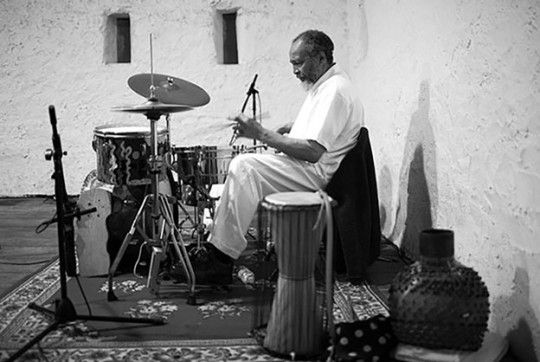
Children of the Forest by Milford Graves, Arthur Doyle, Hugh Glover
Drummer Milford Graves rarely recorded during his lifetime, and, until recently, most of his releases were long out of print. Corbett vs. Dempsey began to rectify that with key reissues of Bäbi, his trio with reed players Arthur Doyle and Hugh Glover, and The Complete Yale Concert 1966, his duos with Don Pullen. TUM records stepped in with Wadada Leo Smith’s Sacred Ceremonies, a 3 CD set including an incendiary duo with Graves along with a trio with Graves and bassist Bill Laswell. Since his death in February, 2021 Black Editions Archive has stepped up the game, digging in to Graves’ vaults, first with an issue of a trio set by Peter Brötzmann, Milford Graves, William Parker, and now, with Children of the Forest, a set of recordings captured in Graves’ Queens workshop with Doyle and Glover in the months leading up to the Bäbi session. The two-LP set documents a January 1976 duo session with Graves along with Glover on tenor saxophone, a brief drum solo from February of that year and a March trio session with Graves, Glover on klaxon, percussion and vaccine (a Haitian one-note trumpet) and Doyle on tenor saxophone and flute. The torrid rawness of these recordings looks toward the torrential barrage of Bäbi but brings out a more ritualistic edge to the playing.
Graves had spent his early years studying African drumming, tablas and playing timbales in Latin jazz bands and that sense of time, extended from African and Caribbean ceremonial music and ritual imbue these sessions. Hugh Glover talks about this and the time he spent with Graves, whom he refers to as Prof, in the extensive interview included with the LP set conducted by Jake Meginsky. “We were listening to the music of the peoples of the interior forest of the Congo… First, the Prof’s mood sets up a tribal-like atmosphere. It’s Congo-like — possession states. The rhythms, I think they immediately stimulated the need to dance… The next thing one must know and be aware of is that Milford Graves, he is not a time-keeping drummer like most jazz drummers. Prof represents the epitome of traditional hand drumming. I’m talking about ceremonial music and ritualistic sounds most familiar with divination.”
Hugh Glover only recorded a few times so the January duo session with him and Graves is a particular find. The first of the four improvisations starts out with the percussionist’s churning thunder, leading to the entry of the tenor player’s hoarse, braying cries. The two had known each other for a decade at that point and Glover had been part of a European tour of Graves’ quartet along with Joe Rigby and Arthur Williams. That symbiosis is immediately evident. There’s a fluid sense of polyphony and elastic polyrhythms at play as the two bound along with ebullient intensity. The music is charged with open, spontaneous interchange and while the intensity level is high, they never overpower each other. Graves’ percussion work is revelatory here, spilling across his kit with a limber, propulsive dynamism. One can hear the legacy of African and Latin American rhythms exploded out with the drummer’s lithe control of tuned skin and slashing cymbals, with masterful control of dynamics and timbre. The inclusion of a short, 2-minute recording from the session reveals their careful attention to detail as the two sound-check the room and their balance and then charge into a compact give-and-take. Their concluding 7-minute improvisation is a particular highlight as they ebb and flow with synchronous fervor.
The inclusion of a three-minute drum solo, recorded in February, is a brilliant addition to the set, particularly since Graves didn’t release any solo recordings until his two discs on Tzadik that came out in the late 1990s. On this 1976 recording, Graves distills his unified, multi-limbed attack into a roiling tempest of energy. Each thundering salvo, each cymbal crash, each resounding wallop of the bass drum is meted out with focus and intention. Glover remarks that listening to the solo recording he was struck by “the melody, and the melody of the tones that he gets, the way he rocks from one melody pitch to another. It has always been a mystery to me how Cuban drummers in Bata were able to modulate the rhythm and the meter. Well, it takes more than one player to do it Cuban style. Prof shows you can do it as one player.”
The three March improvisations with Graves, Glover, and Arthur Doyle provide a notable link in the trajectory toward the session recorded a few weeks later that would be released as Bäbi. Glover reminisces about the March session here, noting “When we played, though, Doyle and I, we weren’t thinking of BÄBI [a name Graves used for his conceptual approach to improvisation]. We were thinking of… well I know I was thing of, and I’m pretty sure he was thinking, how do we keep up with Prof!” While that may have been going through their minds, that uncertainty never reveals itself in their playing. Graves begins the 12-minute improvisation that opens the set with tuned cascades of rim shots and toms and the two quickly join in, with Doyle’s raspy tenor crying out against the shifting percussion. The modulating rhythms and meters of Graves’ solo are the foundation of the buzzing whorls that develop in three-way, spontaneous orchestration which never flags for a moment. The shorter second piece kicks off with an extended section of chattering drums, making way for the two partners to interject barking, ecstatic exclamations that mount with intensity as Graves hurtles in with clanging cowbell. The final piece is the most abstracted, with Doyle’s high-pitched flute skirling against the chafed yawp of Glover’s klaxon and Graves’ coursing flow. Here, improvisation and ritual are melded together with pelting focus.
Glover concludes his interview reminiscing that “It was like Prof was saying, there is no ensemble, there is no musical configuration that I can’t play with as long as I’m allowed to play what I want to play. In other words, his confidence factor was like, I know I have the essence of where any group wants to go. If they allow me to do my thing, I’ll take them there.” The sessions released on Children of the Forest are a fitting testament to that belief and provide a welcome addition to the documentation of the lineage of Graves’ musical legacy. Here's to hoping that Black Editions continues to mine the Prof’s archives.
Michael Rosenstein
#milford graves#arthur doyle#hugh glover#children of the forest#black editions#michael rosenstein#albumreview#dusted magazine#jazz#free jazz#eremite records
14 notes
·
View notes
Text
this round had some incredible high highs, a lot of revists, and more than the usual amount of deletions, at least partially because as we near the end here i am become less precious with what i take out of the library. if i like it but cannot imagine ever needing to hear it again, it's getting tossed going forward.
Crass- Penis Envy (8.5/10)
Dälek- Negro Necro Nekros (9.0/10)
✝ DE△D VIRGIN ✝- Anxieties (8.0/10)
EPMD- Strictly Business (8.0/10)
Fugazi- Red Medicine (9.0/10)
Gorilla Biscuits- Start Today (7.5/10)
Gospel- The Moon is a Dead World (9.0/10)
Hall & Oates- Private Eyes (7.0/10)
Heartsdales- Radioactive (7.5/10)
Herbert- Around the House (8.0/10)
Holy Other- With U (8.5/10)
Jürg Frey- String Quartets (8.0/10)
Kusumi Koharu (久住小春)- Koi ☆ Kana (恋☆カナ) (6.5/10, deleted from iTunes)
Lionel Marchetti- Portrait d'un Glacier (Alpes 2173m) (8.0/10)
Loma Prieta- I.V. (9.5/10)
Marvin Gaye- What's Going On (7.5/10)
Matmos- The Civil War (7.5/10)
Merzbow- Tauromachine (7.5/10)
Miles Davis- Live-Evil (10/10)
Monoscopic- Microsoft Loops 1 (7.0/10, deleted from library because i've decided to delete all the vaporwave i don't have strong emotions for)
My Life With The Thrill Kill Kult- Confessions Of A Knife… (8.0/10)
Neutral Milk Hotel- Unreleased Demo #1 (7.5/10)
Nine Inch Nails- With Teeth (7.5/10)
Ornette Coleman- Science Fiction (9.0/10)
Peter Brötzmann- The Chicago Octet / Tentet (9.0/10)
Prurient- Frozen Niagra Falls (9.0/10)
Ride- Carnival of Light (2.0/10, absolute shit, deleted immediately)
Rollins Band- The End of Silence (8.5/10)
Rudimentary Peni- Cacophony (8.0/10)
Scott Walker- Scott (8.5/10)
Shellac- At Action Park (8.5/10)
Smog- Sewn to the Sky (7.5/10)
Stalaggh- Pure Misanthropia (5.0/10, deleted from library)
Syd Barrett- Barrett (7.0/10, deleted from library not because i hated it but because i will literally never listen to it again)
Tom Waits- Foreign Affairs (7.5/10)
Uncle Tupelo- Anodyne (8.0/10)
猫 シ Corp- Class of '84 (7.5/10)
骷- Skeleton (8.5/10)
6 notes
·
View notes
Text
A History of Avant-garde/Free Jazz Recordings throughout 1959-1999 (U.S./U.K.)
Throughout the years of 1959-1970 there have been multiple recordings that were groundbreaking in developing the new style that would become Free Jazz. Some popular musicians that exemplify this style were, Ornette Coleman, John Coltrane, Cecil Taylor, Sun Ra, Albert Ayler, Anthony Braxton, Art Ensemble of Chicago, Don Cherry, Archie Shepp, Eric Dolphy, Charles Mingus, Miles Davis, Pharaoh Sanders, Alice Coltrane, Steve Lacy, Charlie Haden, Rahsaan Roland Kirk, Andrew Hill, Lester Bowie, Peter Brotzmann, George Lewis, Han Bennink, Roscoe Mitchell, Sunny Murray, Muhal Richard Abrams, Marion Brown, Tony Oxley, Derek Bailey, John Lurie, Lol Coxhill, Bill Dixon, Michael Gibbs, Sonny Sharrock, Evan Parker, Leroy Jenkins, World Saxophone Quartet, Last Exit, and the Spontaneous Music Ensemble.
Recordings:
- Ornette Coleman, The Shape Off Jazz to Come (May 22, 1959)
- Charles Mingus, The Black Saint and the Sinner Lady (January 20, 1963)
- Eric Dolphy, Out to Lunch! (February 25, 1964)
- Andrew Hill, Point of Departure (March 21, 1964)
- Albert Ayler, Spiritual Unity (July 10, 1964)
- John Coltrane, Ascension (July 28, 1965)
- Marion Brown Quartet - Marion Brown Quartet (November 1965)
- Sunny Murray - Sunny Murray (1966)
- Cecil Taylor, Unit Structures (May 19, 1966)
- Don Cherry, Symphony for Improvisers (September 19, 1966)
- Bill Dixon, Intents and Purposes (October 10, 1966 - January 17 & February 21, 1967)
- Muhal Richard Abrams, Levels and Degrees of Light (June 7 - December 21, 1967)
- Rahsaan Roland Kirk, The Inflated Tear (November 27- 30, 1967)
- Spontaneous Music Ensemble, The Spontaneous Music Ensemble (February 18, 1968)
- Peter Brötzmann, Machine Gun (May 1968)
- Tony Oxley, The Baptised Traveler (January 3, 1969)
- Pharaoh Sanders, Karma (February 14-19, 1969)
- Sonny Sharrock, Black Woman (May, 1969)
- Archie Shepp, Blasé (August 16, 1969)
- Michael Gibbs - Michael Gibbs (1970)
- Alice Coltrane, Ptah, the El Daoud (January 26, 1970)
- Miles Davis, Bitches Brew (March 30, 1970)
- The Music Improvisation Company - The Music Improvisation Company ( August 25–27, 1970)
- Han Bennink - Solo (1972)
- Sun Ra, Space is the Place (October 19-20, 1972)
- Art Ensemble of Chicago, Fanfare for the Warriors (September 6-8, 1973)
- Lester Bowie, Fast Last! (September, 1974)
- Anthony Braxton, New York, Fall 1974 (September 27 - October 16, 1974)
- Charlie Haden, Closeness (January 26 - March 18-21, 1976)
- Roscoe Mitchell, Nonaah (August 23, 1976 - January 15 -17 & 22, February 22, 1977)
- Steve Lacy, Straws (November 28-29, 1976)
- Globe Unity Orchestra, Improvisations (September 1977)
- Lol Coxhill, Digswell Duets (May 11-26, 1978)
- Leroy Jenkins, Space Minds, New Worlds, Survival of America (August-September, 1978)
- George Lewis - Jila - Save ! Mon. - The Imaginary Suite (1979)
- World Saxophone Quartet - W.S.Q. (March, 1980)
- Derek Bailey, Aida (July 4 - August 3, 1980)
- Evan Parker, The Snake Decides (January 30, 1986)
- Last Exit, Last Exit (February 26, 1986)
- John Lurie (The Lounge Lizards), Voice of Chunk (September-November 1988)
3 notes
·
View notes
Text
MICHEL HENRITZI & MATHIAS PREUẞ + LA BRUNNÈRE + FLORIAN TOSITTI & VINCENT JEHANNO + AUGUSTIN BETTE
JEUDI LE 28 AVRIL 2022 Trois duos dont un mixte + un solo ( pas mixte) . MICHEL HENRITZI + MATHIAS PREUß LA BRUNNÈRE FLORIAN TOSITTI + VINCENT JEHANNO AUGUSTIN BETTE au BARIGALDI 19, rue Garibaldi / Montreuil M° Robespierre P.A.F. 6€ https://www.facebook.com/events/1057906911426499 MICHEL HENRITZI + MATHIAS PREUß Mathias Preuss (sax tenor/soprano/clarinet) + Michel Henritzi (walkman/mange-disques) Mathias Preuss est un jeune sax ténor qui marche sur le fil coupant de l'histoire de l'improvisation libre de ses aînés (Peter Brötzmann...). En duo ici avec Michel Henritzi qui a ressorti le vieil instrumentarium de Dustbreeders : mange-disques et walkman pour invoquer, convoquer les fantômes d'Arthur Doyle et Albert Ayler pour cette rencontre a haute-tension bruitiste. Mathias Preuss à enregistré avec Ryosuke Kiyasu (Fushitsusha) et Coffee Faith. Michel Henritzi avec Junko (Hijokaidan) et Mattin https://mathiaspreuss.bandcamp.com/ http://michelhenritzi.canalblog.com/ LA BRUNNÈRE Voir de la Brunnère à grande feuilles fleurir en février. Niels Mestre, guitariste, et Annabelle Pirlot, danseuse, partagent la scène pour un concert performé qui débute dans une configuration classique (musicien et danseuse partageant une scène, public dans la salle) et se transforme selon les possibles de la situation en quelque chose qui s'apparenterait à une rave-povera. Leur socle commun est l'improvisation. Composer en temps réel avec une spontanéité surexcitée Créer un vivier en compostant les styles traversés par les performeurs La disposition scène-salle se transforme sensiblement au fil de la performance, la danseuse migrant par moments dans l'espace du public, dans ses zones inoccupées, ses espaces libres et transitoires. https://youtu.be/opPLLI4zr1Q https://www.youtube.com/watch?v=r4XLOOvLNmY FLORIAN TOSITTI + VINCENT JEHANNO Caisse-claire, objets pour l'un, magnétophone revox b77 pour l'autre. Points d’écoutes en variations / ascensions de bruit de fond/ réalismes perturbés / perceptions en twist. " Vincent accumule de la bande magnétique. Vincent enregistre aussi, avec deux micros cardioïdes. On dit des enregistrements de terrain. Parce que ce qui compte, c’est le terrain. Mais aussi le cadre. Qui bouge. On dit aussi phonographie. Parce qu’il y a inscription. On y entrevoit du quotidien et des marées. Des micros et des hauts-parleurs qui relationnent. Des pure tones qui font écho. Des ethnologies qui arrivent. En cascade. Il utilise un Revox B77: la persévérance de l’appareil qui inscrit et reproduit. Et des transducteurs qui diffusent. D’où : Points d’écoutes en variations/ Ascensions de bruit de fond/ Réalismes perturbés/ Perceptions en twist. Florian cherche à construire des moments proches du son (ouïe). Il a publié-pratiqué-cherché seul et en duos (voir trios) de la musique sous formes d’installations ou de programmation pour et autour du son, puis au sein de groupes ou/et collectifs d’improvisation - ou non . Depuis 2018, il partage un duo de batteries réduites (kristallroll) ainsi qu'une version "étendue" en quartet (Trille(s)). Florian cherche à construire des performances, enregistrements et installations en fonction des sites, mettant en œuvre une démarche improvisée se rapportant aux poétiques de l’expérience, tendance reflétant une volonté de découvrir plutôt que d’inventer." https://youtu.be/b1Q9DW7u0nM https://soundcloud.com/tositti AUGUSTIN BETTE Solo de batterie rudimentaire (utilisant les rudiments) : ce qui vient à froid sans effort,abuser des rudiments usés pour faire entendre les petites différences, on peut aussi dire ouvertures de filtre, ouvrir et fermer des filtres avec la vieille batterie rudimentaire,on ne dit pas copier le sinus mais être bousculé par le sinus numériquevoire découpé,un adage de batteur stipule que plus vous jouez d’éléments moins c’est intéressant,d’où l’habitude du découpage en temps réel, depuis le mono-élément jusqu’à la mégalomanie du 180°, voire 360°, on en met derrière nous, un gong, au cas où. La vieille batterie rudimentaire poussée vers les plus petites différences ou les maximales,on tourne le bouton à la vitesse qu’on veut, quoique sans électricité ce sera imprécis d’où la frustration de l’imitation impossible, ou bien l’écart, est-ce que cet écart vaut la peine c’est la question https://2035archives.bandcamp.com/album/le-garage Fly - Jo L'Indien
1 note
·
View note
Text
A-SEPTIC W/VLADIMIR TARASOV
Sabato sera, allo spazio Nova, che ospita i concerti della stagione invernale di Novara Jazz, è stato molto emozionante ascoltare un musicista nato a Mosca, e non un musicista qualsiasi, ma una leggenda vivente: Vadimir Tarasov. Sì proprio una leggenda vivente: lo è per la sua attività di musicista e compositore, che lo ha portato a suonare oltre che con la Lithuanian Symphonic Orchestra, anche con molte altre orchestre in Europa e negli USA. Ma non basta, Tarasov ha collaborato con moltissimi jazzisti come Peter Brötzmann, Mikolaj Trzaska, Ken Vandermark, Andrew Cyrille, the Rova Saxophone Quartet, Anthony Braxton, Mark Dresser, Lauren Newton e Josef Nadj, come si dice “solo per fare alcuni nomi”. In considerazione della sua poliedrica attività, oltre che di musicista, di performer e compositore per il cinema e la video art, ha anche collaborato con artisti quali Sarah Flohr e Ilya Kabakov del quale, mi sia concesso un ricordo del tutto personale, vidi a Parigi qualche decennio fa “Qui ci è capitato di vivere”, una installazione con un sottofondo sonoro proprio di Tarasov che usciva da una sgangherata radio sovietica. Per tornare al magnifico set di sabato a Novara , con il grande Maestro, hanno l’onore e l’onere di cimentarsi due giovani, ma già ben affermati jazzisti italiani, Simone Quatrana al piano e Stefano Ferrian al sax. E la “reunion” di sabato non è un caso fortuito, visto che “A-Septic” è un duo già collaudato in concerti tenutisi in Europa e Russia. Questa sera si aggiunge la gemma mancante, ovvero la batteria di Vladimir Tarasov, anche lui in “lista d’attesa”, dopo la sfracello della pandemia. Sarà anche per la sua presenza, sarà anche per la suggestione sempre forte e magnificamente “fuori posto”, del piano preparato di Simone Quatrana, sarà anche per la trance creativa del bravissimo Stefano Ferrian, sarà per tutto ciò, che i primi brani sembrano creati apposta per una serata futurista, anzi cubo-futurista, dove la parte dell’intonarumori, la sostiene benissimo e senza scomporsi Vladimir Tarasov, con una batteria all’apparenza classica, ma in cui, dagli angoli più riposti, escono piattini, palline bacchette che la fanno somigliare a una scatola colma di magiche sonorità. Dagli altri brani esce davvero un po’ di tutto e, mescolato al jazz, forse persino un po’ dello Stravinskij dell”Histoire du Soldat”, soprattutto grazie alle corde percosse dai martelletti del piano di Simone Quatrana. Ma non è tutto qui, poiché dal piano suonato direttamente da dentro la cassa armonica e dal fiato fatto correre nel sax di Stefano Ferrian, sembra saltar fuori la colonna sonora di “Solaris”, tanto per omaggiare la Russia, quella che ci piace. E qui, in questa magnifico amalgama, si sente la mano angelicamente diabolica di un performer come Vladimir Tarasov. Tutto poi trascolora in un jazz frenetico e di ricerca, quello pieno a cui siamo abituati, dove il sax detta i temi, la batteria incantata di Tarasov scandisce i ritmi e dove il piano appare sempre il rifugio sicuro dopo le tempeste sonore. Quando gli incontri sono indovinati e voluti e quando, ad un duo così simbiotico come quello di Simone Quatrana e Stefano Ferrian, si aggiunge un artista a tutto tondo come Vladimir Tarasov, artista che porta con sé tutte le tracce delle tante esperienze attraversate, il risultato non può essere che un piccolo gioiello come il concerto di ieri sera. Tarasov ringrazia il pubblico novarese sfoggiando una bella camicia della tradizione Ucraina, indossata per l’occasione. Che la sua “mise”, il suo genio e la magnifica musica dell’Aseptic Duo siano un talismano per la mente e per il cuore contro la follia del mondo.


0 notes